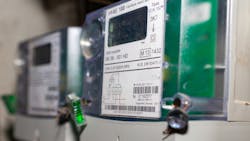Maintain Ultra-Low Quiescent Current While Charging Your Supercapacitor (Download)
Battery-powered smart flow meters must record information such as gas or water consumption and periodically transmit that information to a data center, often using NB-IoT. And line-powered IoT devices may require backup power to communicate their status during rare system power outages. For both use cases, a bidirectional buck/boost converter combined with a supercapacitor can supply the high peak pulse currents needed to complete the data transmission.
Most smart flow meters, designed to operate over a 10- or 20-year lifetime, employ LiMnO2 or LiSOCl2 batteries. Because the LiSOCl2 features a higher output voltage (3.6 V vs. 2 to 3 V for the LiMnO2), it can better support 3-V electromagnetic valve control and has become the popular choice for smart-meter applications.
